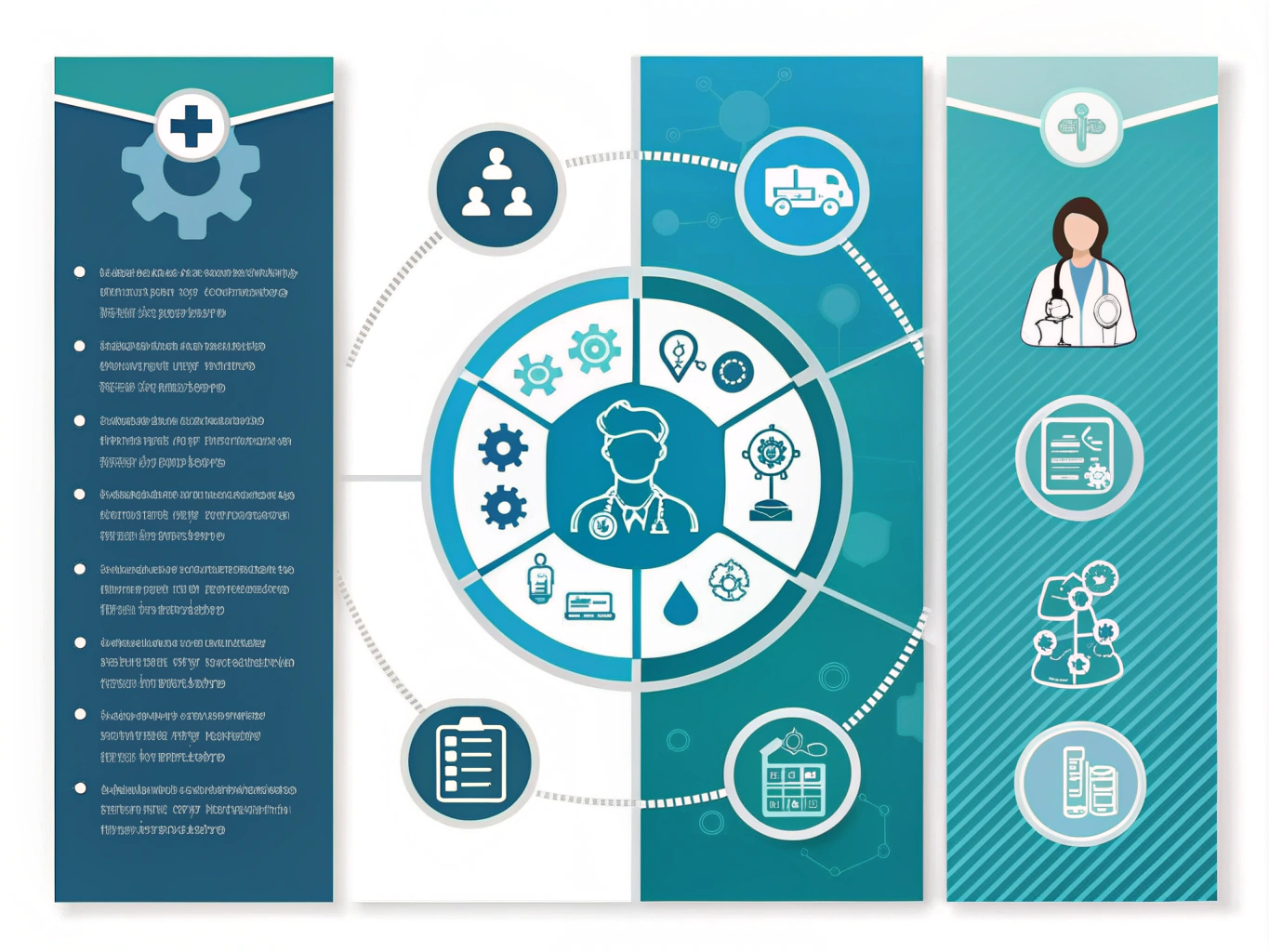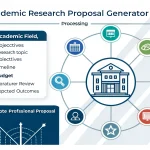Healthcare Program Management and Care Integration Guide Generator
Is this tool helpful?
How to Use the Healthcare Program Management and Care Integration Guide Generator Effectively
Follow these steps to create a tailored healthcare program management and care integration guide that meets your needs:
- Define your program focus: Select the key area you want the guide to address. For example, you might choose Chronic disease management in community health centers or Telehealth adoption for rural clinics.
- Specify your target audience: Identify who will use the guide. This could be community health coordinators and outreach staff or rural healthcare providers and telemedicine technicians.
- List specific objectives: Clearly outline your goals such as improving patient adherence through remote monitoring or streamlining referral processes within integrated care teams.
- Describe challenges or considerations: Mention unique obstacles like limited internet connectivity in rural areas or staff turnover impacting program continuity.
- Click “Generate Healthcare Guide”: The tool will produce a customized guide based on your inputs.
After generating your guide, you can review the content and copy it for practical use in your healthcare program management and care integration projects.
Healthcare Program Management and Care Integration Guide Generator: Definition, Purpose, and Benefits
The Healthcare Program Management and Care Integration Guide Generator is a practical resource designed to help healthcare professionals create customized, comprehensive guides. It focuses on improving program management and integrating care within diverse healthcare settings by addressing specific goals and challenges.
Purpose of the Tool
This tool simplifies the process of developing actionable strategies and best practices tailored to your healthcare program. It incorporates user inputs to generate guidance that aligns with your program focus, target audience, and objectives.
Key Benefits
- Save time: Generate detailed guides quickly without extensive manual research.
- Customization: Tailor content to your specific healthcare sector and audience.
- Practical insights: Access focused strategies for program development, care coordination, and evaluation.
- Evidence-based: Receive recommendations grounded in current healthcare management practices.
- Comprehensive scope: Cover both management and care integration components effectively.
Practical Uses of the Guide Generator for Healthcare Professionals
This guide generator supports a wide range of healthcare applications. Here are common scenarios where it adds value:
Developing and Implementing Targeted Programs
Define clear goals, allocate resources, and engage stakeholders effectively. Use the tool to outline action plans and timelines that fit your healthcare setting.
Enhancing Care Integration
Coordinate multidisciplinary teams, incorporate patient-centered approaches, and leverage health information technologies such as Electronic Health Records (EHR) and telehealth platforms.
Leveraging Data Analytics for Improved Outcomes
Utilize data-driven insights for population health management, risk stratification, and performance monitoring. The tool suggests appropriate analytical techniques and software suited to your program.
Addressing Specific Healthcare Challenges
From rural health disparities to pediatric oncology care coordination, the generator crafts guides that tackle unique challenges by recommending proven strategies and practical solutions.
Examples of Healthcare Program Management and Care Integration Applications
Improving Chronic Disease Management in Community Clinics
- Identify high-risk patients for targeted interventions using risk stratification models.
- Establish care coordination protocols for patients with multiple chronic conditions.
- Implement telemonitoring solutions to support remote patient engagement.
- Build partnerships with local organizations for education and support.
- Analyze patient data to track outcomes and optimize program effectiveness.
Enhancing Pediatric Oncology Survivorship Programs
- Create multidisciplinary survivorship clinics focused on long-term patient care.
- Develop individualized care plans addressing medical and psychosocial needs.
- Integrate patient navigation services for seamless transitions between care phases.
- Use health IT solutions for comprehensive patient tracking.
- Collaborate with community providers to ensure continuous support.
Key Components of Effective Healthcare Program Management
Conducting Needs Assessments
Understand your population’s health requirements and service gaps by:
- Using surveys and focus groups to gather qualitative insights.
- Analyzing demographic and epidemiological data.
- Mapping community resources and healthcare infrastructure.
Program Development and Implementation
After assessing needs, focus on:
- Setting measurable objectives and defining strategies.
- Allocating resources effectively.
- Engaging stakeholders for collaboration.
- Establishing clear timelines and milestones.
Monitoring and Evaluation
Ensure continuous improvement by:
- Developing and tracking key performance indicators (KPIs).
- Collecting and analyzing program data regularly.
- Soliciting feedback from patients and staff.
- Making data-driven decisions to refine programs.
Care Integration Strategies for Better Healthcare Outcomes
Building Multidisciplinary Teams
Form teams including physicians, nurses, allied health professionals, social workers, and care coordinators to provide holistic patient care.
Emphasizing Patient-Centered Care
Promote shared decision-making, develop personalized care plans, support patient self-management, and involve families in care delivery.
Utilizing Health Information Technology
Implement tools like Electronic Health Records (EHR), Health Information Exchanges (HIE), telehealth platforms, clinical decision support systems, and patient portals to streamline care coordination.
Harnessing Data Analytics in Healthcare Program Management and Care Integration
Applications of Data Analytics
- Population health management to improve community outcomes.
- Risk stratification and predictive modeling to prioritize resources.
- Capacity planning for optimal allocation of clinical services.
- Quality improvement initiatives with performance tracking.
- Optimizing patient flow and care coordination.
Techniques and Tools
The guide recommends using statistical software like SPSS, R, or SAS; machine learning algorithms; data visualization platforms such as Tableau or Power BI; and natural language processing methods to analyze complex health data.
Frequently Asked Questions (FAQ)
How often should I update my healthcare program management strategies?
Review and update your strategies annually or any time significant changes occur in regulations, technology, or population health needs.
What are key indicators of successful care integration?
Look for improved patient outcomes, fewer hospital readmissions, higher patient satisfaction, better provider coordination, and efficient use of resources.
How can small organizations implement effective program management with limited resources?
Focus on high-priority areas, use existing community partnerships, and adopt affordable or open-source data analytics tools to maximize impact.
What role does patient engagement play in care integration?
Engaged patients follow treatment plans better, participate in shared decisions, and provide useful feedback to improve care quality.
How can I measure the return on investment (ROI) for program management and care integration?
Track outcomes such as reduced healthcare costs, enhanced clinical results, and increased patient satisfaction to evaluate ROI effectively.
Important Disclaimer
The calculations, results, and content provided by our tools are not guaranteed to be accurate, complete, or reliable. Users are responsible for verifying and interpreting the results. Our content and tools may contain errors, biases, or inconsistencies. Do not enter personal data, sensitive information, or personally identifiable information in our web forms or tools. Such data entry violates our terms of service and may result in unauthorized disclosure to third parties. We reserve the right to save inputs and outputs from our tools for the purposes of error debugging, bias identification, and performance improvement. External companies providing AI models used in our tools may also save and process data in accordance with their own policies. By using our tools, you consent to this data collection and processing. We reserve the right to limit the usage of our tools based on current usability factors.







